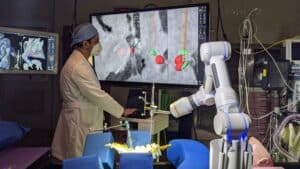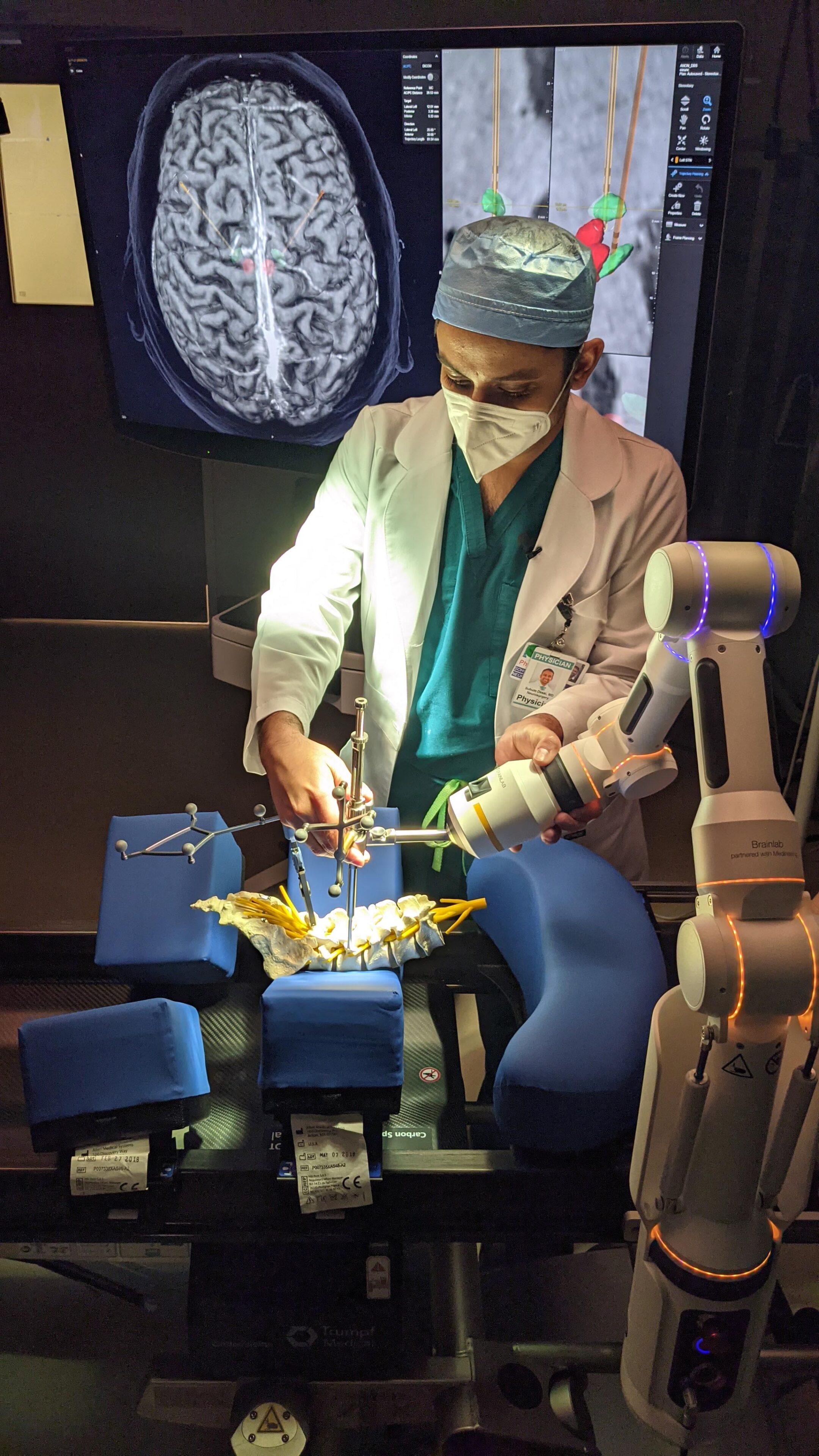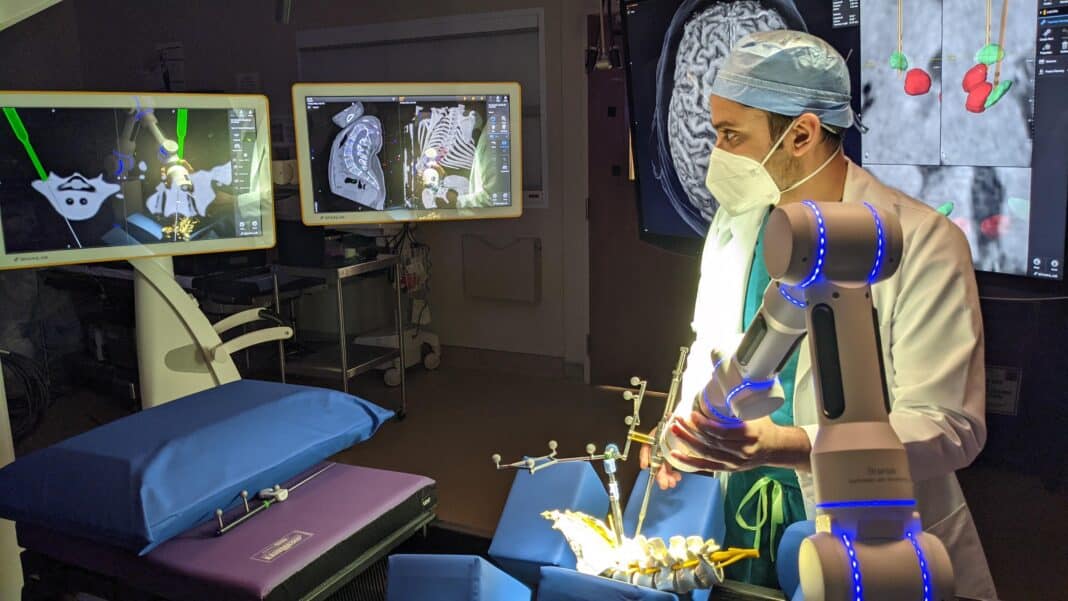
HARLINGEN — Spinal surgery.
Those two words bear a harsh connotation that can send chills through you.
But, it’s not as scary as it used to be, thanks to cutting-edge robotic equipment now in use at Valley Baptist Medical Center.
“Robotic spinal surgery, what it is essentially is a navigational system that is connected to a robotic arm,” said Dr. Alejandro Betancourt, neurosurgeon at Valley Baptist Medical Center.
“That robotic arm allows us to place pedicle screws in the spine with precision,” Betancourt said. “Pedicle screws are used to fuse the spine in patients that have scoliosis, degeneration of the spin, and destruction of the bone by infections or tumors.”
Betancourt recently became the first physician at Valley Baptist to perform a robotic spinal procedure using the new Brainlab computer navigation system, AIRO mobile intraoperative CT, and Cirq robotic surgical arm.
“It was a lumbar fusions and he’s doing fine,” Betancourt said. “With the new advanced imaging equipment, we can capture and review images of the patient’s anatomy while they are still in the operating room, allowing us to make decisions rapidly and to potentially change course if required.”
This serves the dual purpose of saving time and enabling greater accuracy, he said. Features of the navigation system help surgeons plan the procedure with greater precision and accuracy than ever before, which can lead to safer and more effective procedures for patients.
And with spinal surgery, everyone would agree, accuracy is crucial. Inaccuracy can result in screws being out of place, pinching nerves, out of position.

Bentancourt said utilizing the new surgical robotic equipment could also offer a variety of benefits to patients, including less post-operative pain, smaller incisions, and less scarring than traditional open surgery.
“The robot is controlled by the surgeon during the procedure,” he said. “By having an extra software-driven hand, your doctor can focus on all the surgical steps with both human hands.”




